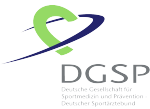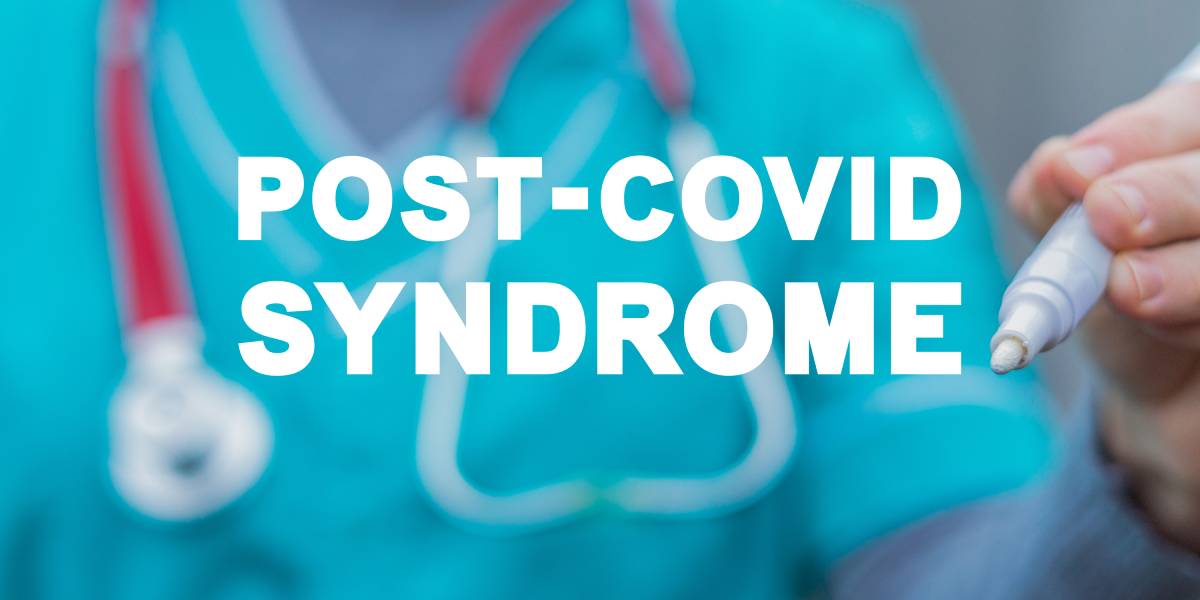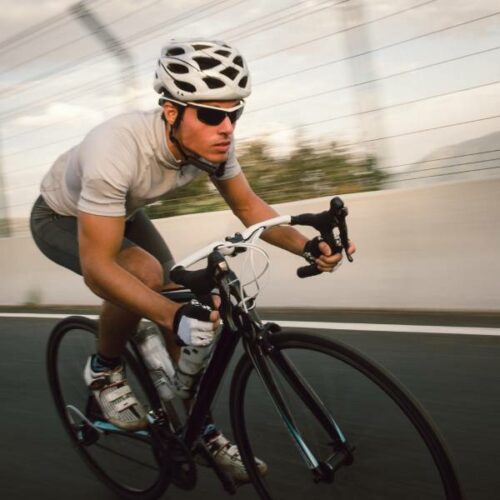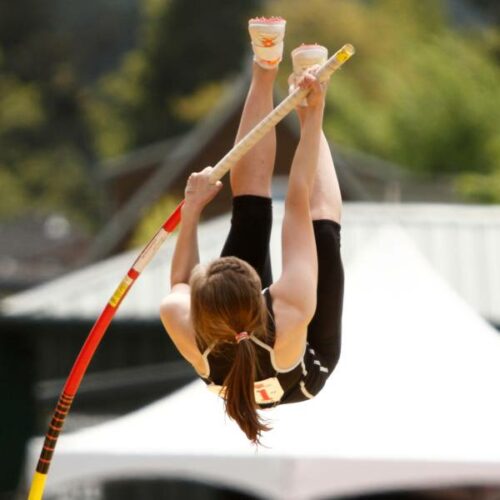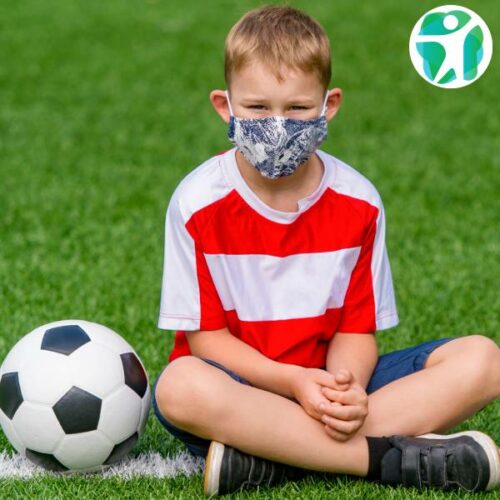Rehabilitation after COVID-19 – the Challenge of Post-COVID Syndrome with Post-Exertional-Malaise
Englischsprachiges Editorial der #5/2022 der Deutschen Zeitschrift für Sportmedizin (DZSM). Die Autoren Prof. Steinacker et al. thematisieren die Herausforderungen für die Rehabilitation, die sich durch ein Post-COVID-Syndrom ergeben, welches mittlerweile als Multiorganerkrankung anerkannt wird. Dieser Artikel ist Teil unseres Fokusthemas "COVID-19: Infos und Empfehlungen". Den Link zur Übersicht aller Beiträge des Themenschwerpunkts finden Sie am Ende des Textes oder durch Eingabe des Suchbegriffs #Covid-19 in das Suchfeld dieser Website.
The COVID-19 pandemic poses a major challenge. First, it is important for patients and their therapists to overcome the acute phase of SARS-CoV-2 infection. In some patients, this leads to a delayed and severe course of recovery with inpatient hospitalization, often with oxygen therapy and invasive ventilation (1). These ventilatory sequelae and subsequent damage are similar to other long-term ventilated patients.
Incidence of Post-COVID Syndrome
Some of the patients develop long-term consequences in the sense of the post-COVID syndrome, which is now recognized as a multi-organ disease, with the considerable risk of reduced physical and/or cognitive performance and, as a consequence, disability. Data on the frequency vary between 3% and well over 30% depending on the underlying definition and methodology; realistically estimated, the development of a post-COVID syndrome can be assumed in about 10% of infected patients (5, 6, 16, 18).
More than one third of the population became infected with SARS-Cov-2 (detection by PCR test) between February 2020 and May 2022. Additionally, more than two thirds of the infections occurred in 2022, and thus predominantly with the virus variant Omikron. Compared to other virus variants (wild type to delta), omicron is considered less virulent and neurotropic. However, based on current observations, the development of a post-COVID syndrome must also be assumed in approx. 5% of infections with
Omikron (20).
Typical Symptoms of Post-COVID Syndrome
The population-based retrospective cohort study EPILOC, conducted in four geographically defined regions of southern Germany, enrolled 11 710 people aged 18-65 years with confirmed SARS-CoV-2 infection between October 2020 and March 2021 (19). Here, the most commonly reported symptoms in this cohort (mean age 44.1 years, 59.8% women, mean follow-up 8.5 months) were rapid physical exhaustion (prevalence >20%), shortness of breath especially on exertion, impaired concentration and memory, chronic fatigue, odor disturbances or changes (19, 22).
It should be noted that the post-COVID syndrome also affects younger people to a considerable extent. Fatigue was present in 37.2% of cases and neurocognitive impairment in 31.3% of cases. These were the symptom groups that contributed most to reduced health recovery and reduced occupational resilience. However, chest pain, anxiety/depression, headache/dizziness and pain syndromes (limb, muscle and joint pain) were also reported (21). In the EPILOC cohort, the overall estimate for post-COVID syndrome was 28.5% (age- and sex-standardized rate 26.5%). This was defined as the occurrence of new symptoms with at least moderate impairment of daily living and ≤80% of restored general health or ability to work (19).
Therapeutic Recommendations for Post-COVID Syndrome are Currently Lacking
Although there is empirical data on the treatment of post-COVID syndrome, there are no proven strategies and guidelines available (13, 17, 20). There are only few reliable findings on drug therapy of post-COVID syndrome. Generally, the substitution of vitamin D and a generally vitamin-rich diet are considered to be supportive. Vitamin D and omega-3 fatty acids are immunologically stabilising and effective against autoimmune phenomena. Flavionides and polyphenols can have an immunomodulating effect. It seems necessary to systematize previous application observations and to document effects, for example of anti-inflammatory therapy, in order to develop prospective treatment approaches as a result (2, 4, 7, 8, 9, 14, 15).
Return-to-Play Recommendations
For competitive and recreational sports, there are detailed recommendations on when to resume sports and training or start competitive sports. In case of moderate to severe symptoms during and after infection in the form of fatigue, dyspnea at rest or / and under exertion, fever >38.5°C and more severe muscle and limb pain, a symptom-oriented medical examination should be performed. In case of cardiac symptoms (palpitations, extra beats, chest pain), this includes echocardiography, long-term ECG and / or exercise ECG. If dyspnea is present during exercise, spiroergometry with blood gas analysis at rest and during exercise is recommended (10, 17, 23). Diagnosis of cardiac or pulmonary diseases before starting therapy in the rehabilitation centers is important to initiate specific therapy
Rehabilitation Measures for Post-COVID Syndrome
In addition, due to the high prevalence of impaired performance and disability (>20%), outpatient and inpatient rehabilitation measures are relevant in order to restore the function and participation of those affected with post-COVID syndrome (19). Physical training and psychological interventions are potential therapeutic approaches. In terms of physical training, strength training for muscle building plays an important role. For endurance training, interval training showed good effects, with short, slightly intense phases alternating with very light phases of equal or double duration (16). Furthermore, psychological and psychosomatic therapy approaches can contribute to an improvement in the disease course. This include relaxation methods, hypnosis training and psychotherapeutic group work.
In addition, an improvement can be achieved through respiratory therapy approaches that combine relaxation and muscle training (10, 25). In addition, cognitive training and occupational therapy are used in rehabilitation clinics (3, 13). A recently published review that included eight studies with a total of 1518 subjects could not demonstrate any effect of sports interventions compared to other therapy approaches such as cognitive behavioral therapy with regard to physical functioning. However, the long-term effects of corresponding training programs are unclear (13).
Post Exertional Malaise and Pacing Strategy
The occurrence of „Post Exertional Malaise“ (PEM), a fatigue typically occurring after physical, mental, cognitive or emotional stress and lasting up to days, is particularly problematic in therapeutic approaches. Consequently, PEM is a particular challenge for rehabilitation programs. Some support groups for Myalgic Encephalomyelitis (ME) and Chronic Fatigue Syndrome (CFS) even specifically discourage participation in structured rehabs because of the potential for overwhelm. Similar issues play out in post-COVID patients, who often feel overwhelmed by traditional rehab interventions. For example, traditional activation of patients does not work if the patient is still tired and sick days after a measure.
As an alternative to rehabilitation programs, „pacing“ concepts are proposed that provide for adaptation to the current state of health and performance. Here, the patient`s current condition and a possible post exertional malaise are included in the load planning. However, as there is often no time for pacing in the context of inpatient rehabilitation concepts, conventional inpatient rehab concepts often reach their limits in the context of
post-COVID patients.
Unanswered Questions about Rehabilitation for Post-COVID Syndrome
1) How can the recovery of functions and participation, in particular the ability to work, be achieved in patients suffering from a post-COVID syndrome with post-exertional malaise?
2) How can the tolerance of physical training be determined in the presence of post exertional malaise and what are the effects of different training strategies? How can training be sensibly dosed and how often can training be performed?
3) What is the effect of psychological training, e.g. relaxation or hypnosis methods? How often and how high can such procedures be applied and dosed?
4) Which existing medication strategies and other therapeutic approaches are used to treat post-COVID syndrome and how do they affect the existing functional impairment and symptoms?

■ Steinacker JM, Kirsten J, Schulz SVW, Jerg A, Kersten J, Matits L, Schellenberg J
Ähnliche Beiträge zum Thema finden Sie weiter unten!
Alle Beiträge der DZSM zum Fokusthema „COVID-19: Infos und Empfehlungen“ finden Sie hier oder durch Eingabe des Suchbegriffs #Covid-19 in das Suchfeld dieser Website.
Quellen:
Alkodaymi MS, Omrani OA, Fawzy NA, Shaar BA, Almamlouk R, Riaz M, Obeidat M, Obeidat Y, Gerberi D, Taha RM, Kashour Z, Kashour T, Berbari EF, Alkattan K, Tleyjeh IM. Prevalence of post-acute COVID-19 syndrome symptoms at different follow-up periods: a systematic review and meta-analysis. Clin Microbiol Infect. 2022; 28:657-666. doi:10.1016/j.cmi.2022.01.014
Augusti PR, Conterato GMM, Denardin CC, Prazeres ID, Serra AT, Bronze MR, Emanuelli T. Bioactivity, bioavailability, and gut microbiota transformations of dietary phenolic compounds: implications for COVID-19. J Nutr Biochem. 2021;97:108787. doi:10.1016/j.jnutbio.2021.108787
Becker JH, Lin JJ, Doernberg M, Stone K, Navis A, Festa JR, Wisnivesky JP. Assessment of Cognitive Function in Patients After COVID-19 Infection. JAMA Netw Open. 2021;4:e2130645. doi:10.1001/jamanetworkopen.2021.30645
Bizjak DA, Treff G, Zügel M, Schumann U, Winkert K, Schneider M, Abendroth D, Steinacker JM. Differences in Immune Response During Competition and Preparation Phase in Elite Rowers. Front Physiol. 2021;12:803863. doi:10.3389/fphys.2021.803863
Ceban F, Ling S, Lui LMW, Lee Y, Gill H, Teopiz KM, Rodrigues NB, Subramaniapillai M, Di Vincenzo JD, Cao B, Lin K, Mansur RB, Ho RC, Rosenblat JD, Miskowiak KW, Vinberg M, Maletic V, McIntyre RS. Fatigue and cognitive impairment in Post-COVID-19 Syndrome: A systematic review and meta-analysis. Brain Behav Immun. 2022;101:93-135. doi:10.1016/j.bbi.2021.12.020
Del Brutto OH, Wu S, Mera RM, Costa AF, Recalde BY, Issa NP. Cognitive decline among individuals with history of mild symptomatic SARS-CoV-2 infection: A longitudinal prospective study nested to a population cohort. Eur J Neurol. 2021;28:3245-3253. doi:10.1111/ene.14775
Españo E, Kim J, Lee K, Kim JK. Phytochemicals for the treatment of COVID-19. J Microbiol. 2021;59:959-977. doi:10.1007/s12275-021-1467-z
Gligorijevic N, Radomirovic M, Nedic O, Stojadinovic M, Khulal U, Stanic-Vucinic D, Cirkovic Velickovic T. Molecular Mechanisms of Possible Action of Phenolic Compounds in COVID-19 Protection and Prevention. Int J Mol Sci. 2021;22:12385. doi:10.3390/ijms222212385
Hahn J, Cook NR, Alexander EK, Friedman S, Walter J, Bubes V, Kotler G, Lee IM, Manson JE, Costenbader KH. Vitamin D and marine omega 3 fatty acid supplementation and incident autoimmune disease: VITAL randomized controlled trial. BMJ. 2022;376:e066452. doi:10.1136/bmj-2021-066452
Halle M, Bloch W, Niess AM, Predel HG, Reinsberger C, Scharhag J, Steinacker J, Wolfarth B, Scherr J, Niebauer J. Exercise and sports after COVID-19-Guidance from a clinical perspective. Transl Sports Med. 2021;4:310-318. doi:10.1002/tsm2.247
Hilpert K, Mikut R. Is There a Connection Between Gut Microbiome Dysbiosis Occurring in COVID-19 Patients and Post-COVID-19 Symptoms? Front Microbiol. 2021;12:732838. doi:10.3389/fmicb.2021.732838
Joshi R, Rathi M, Thakur J. Physiotherapy Rehabilitation in Post-COVID-19 Phase: A Case Report. J Clin Diagn Res. 2021;15:YD01-YD02.
Larun L, Brurberg KG, Odgaard-Jensen J, Price JR. Exercise therapy for chronic fatigue syndrome. Cochrane Database Syst Rev. 2019;10:CD003200. doi:10.1002/14651858.CD003200.pub8
Lee S, Yu Y, Trimpert J, Benthani F, Mairhofer M, Richter-Pechanska P, Wyler E, Belenki D, Kaltenbrunner S, Pammer M, et al. Virus-induced senescence is a driver and therapeutic target in COVID-19. Nature. 2021;599:283-289. doi:10.1038/s41586-021-03995-1
Liskova A, Samec M, Koklesova L, Samuel SM, Zhai K, Al-Ishaq K, Abotaleb M, Nosal V, Kajo K, Ashrafizadeh M, Zarrabi A, Brockmueller A, Shakibaei M, Sabaka P, Mozos I, Ullrich D, Prosecky R, La Rocca G, Caprnda M, Büsselberg D, Rodrigo L, Kruzliak P, Kubatka P. Flavonoids against the SARS-CoV-2 induced inflammatory storm. Biomed Pharmacother. 2021;138:111430. doi:10.1016/j.biopha.2021.111430
Lopez-Leon S, Wegman-Ostrosky T, Perelman C, Sepulveda R, Rebolledo PA, Cuapio A, Villapol S. More than 50 long-term effects of COVID-19: a systematic review and meta-analysis. Sci Rep. 2021;11:16144. doi:10.1038/s41598-021-95565-8
Niess AM, Widmann M, Gaidai R, Gölz C, Schubert I, Castillo K, Sachs JP, Bizjak D, Vollrath S, Wimbauer F, et al. COVID-19 in German Competitive Sports: Protocol for a Prospective Multicenter Cohort Study (CoSmo-S). Int J Public Health. 2022;67:1604414. doi:10.3389/ijph.2022.1604414
Paul AK, Hossain MK, Mahboob T, Nissapatorn V, Wilairatana P, Jahan R, Jannat K, Bondhon TA, Hasan A, de Lourdes Pereira M, Rahmatullah M. Does Oxidative Stress Management Help Alleviation of COVID-19 Symptoms in Patients Experiencing Diabetes? Nutrients. 2022;14:321. doi:10.3390/nu14020321
Peter RS, Nieters A, Kräusslich H, Brockmann SO, Göpel S, Kindle G, Merle U, Steinacker JM, Rothenbacher D, Kern WV and the EPILOC Phase 1 Study Group. Prevalence, determinants, and impact on general health and working capacity of post-acute sequelae of COVID-19 six to 12 months after infection: a population-based retrospective cohort study from southern Germany. medRxiv. 2022. doi:10.1101/2022.03.14.22272316 [in press].
Soriano JB, Murthy S, Marshall JC, Relan P, Diaz JV; WHO Clinical Case Definition. A clinical case definition of post-COVID-19 condition by a Delphi consensus. Lancet Infect Dis. 2022;22:e102-e107. doi:10.1016/S1473-3099(21)00703-9
Stallmach A, Kesselmeier M, Bauer M, Gramlich J, Finke K, Fischer A, Fleischmann-Struzek C, Heutelbeck A, Katzer K, Mutschke S, Pletz MW, Quickert S, Reinhart K, Stallmach Z, Walter M, Scherag A, Reuken PA. Comparison of fatigue, cognitive dysfunction and psychological disorders in post-COVID patients and patients after sepsis: is there a specific constellation? Infection. 2022; 50: 661-669. doi:10.1007/s15010-021-01733-3
Steinacker JM*, Schellenberg J*, Bloch W, Deibert P, Friedmann-Bette B, Grim C, Halle M, Hirschmüller A, Hollander K, Kerling A, Kopp C, Mayer F, Meyer T, Niebauer J, Predel HG, Reinsberger C, Röcker K, Scharhag J, Scherr J, Schmidt-Trucksäss A, Schneider C, Schobersberger W, Weisser B, Wolfarth B, Nieß AM. Recommendations for return-to-sport after COVID-19: Expert consensus. Dtsch Z Sportmed. 2022;73:127-136. doi:10.5960/dzsm.2022.532
Sudre CH, Murray B, Varsavsky T, Graham MS, Penfold RS, Bowyer RC, Pujol JC, Klaser K, Antonelli M, Canas LS, et al. Attributes and predictors of long COVID. Nat Med. 2021;27626-631. doi:10.1038/s41591-021-01292-y
Taquet M, Luciano S, Geddes JR, Harrison PJ. Bidirectional associations between COVID-19 and psychiatric disorder: retrospective cohort studies of 62 354 COVID-19 cases in the USA. Lancet Psychiatry. 2021;8:130-140. doi:10.1016/S2215-0366(20)30462-4
Trabelsi K, Ammar A, Masmoudi L, Boukhris O, Chtourou H, Bouaziz B, Brach M, Bentlage E, How D, Ahmed M, et al. Globally altered sleep patterns and physical activity levels by confinement in 5056 individuals: ECLB COVID-19 international online survey. Biol Sport. 2021;38:495-506. doi:10.5114/biolsport.2021.101605

